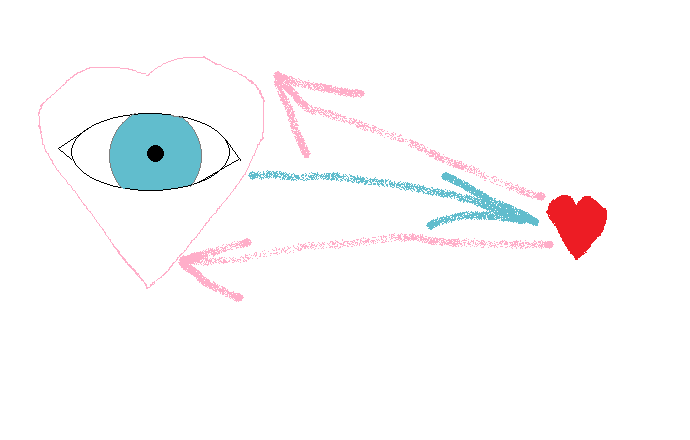
“Attention directs perception just as perception influences attention: the sensory array and its corresponding brain centers are in near-constant communication with one another and signals go both ways.”
Eve (ebook page 157) by Cat Bohannon
While this quote comes from a book about female bodies evolving, and male ones by comparison, this observation about the mutual influence of eye on the mind and the other way around fits well with the blog theme here about seeing things and stepping back to find parallels to thinking about things, too. A familiar folk belief is that the eyes present a window to the person’s soul; that is, sustained gazing at the person, directly in the eye, may offer clues to the innermost person, bypassing the superficial impression created by clothing, hairstyle, speech habits and other status markers. Probably Rob Walker‘s 2019 book, The Art of Noticing, dwells on exercises and examples to improve habits of mind so that more of the surrounding world and one’s experience in it will become more noticeable; powers of observation will grow. But the other side of the relationship may get overlooked on those pages –how the things we note or deem significant can also shape the habits of mind when venturing into the world: GIGO, garbage in garbage out and the reverse, beauty in and beauty out, perhaps.
By extension to all senses, the Aristotelian big five, but also the many other kinds of perceptual system in one’s world, too, perhaps what is on one’s mind affects how things smell, taste, sound, and feel to the touch. And the reverse: perhaps what elements of sound, touch, taste and smell (along with sights) that comprise one’s own particular waking experience also have an affect on what fills one’s mind and the imaginings one foresees (or fails to foresee). If any part of this two-way street is true, then the hopeful interpretation is that striving for a better surrounding experience –by serendipity, mindfulness, or by design– can have a positive result in one’s heart and mind. At the same time, though, a pessimistic consequence of the mutual effects of exterior experience and interior world is that cycles of bad things happening seem to beget more; a kind of “circling the drain” absence of hope once begun in this downward spiral.
Returning to the visual experience of moving through one’s surroundings and a lifetime of days and years, just as photography comes from the words “writing with light,” so too the roots of meaning for visual experience lying in things seen (and therefore thought about) more generally; of one’s eyes and visual cortex to make sense of the colors, textures, geometry and other patterns, along with patterns of light and shadow: seeing one’s world can appear more or less the same for people bringing very different life experiences to the moment. But things can carry very different meanings, too. Some fixate on one thing, others dwell on another. The gaze of some will rest on one subject while others will bounce from subject to subject before arriving at something stirring curiosity, giving relief from unpleasant things, or signifying something meaningful in the eye of that particular person –right now, from long-ago times, or envisioning possible futures there. Like the Rashomon Effect (or Hamlet before that), the same sequence of events can take on different meanings in the eye of one beholder compared to another. Even for the same person, when revisiting a place or a picture from a particular moment, as life experience accumulates the larger meaning of the place or event recorded may look different to its original meaning. Ditto when rereading a book, seeing a movie again, or listening to a song or poem once more. Scriptures (from Bible, for example) are considered a “living” word since the same ink on paper can reveal different meanings or emphasis when a person engages with it early in life, midway, or later on in life.
All together the two-way street of eye to environment to one’s thoughts (identifying, recognizing, tying to memories, or passing over something that once seemed important on another occasion) is a pulsing, living thing. Photowalking demonstrates how different camera friends stop to compose very different records of the day’s perambulating. On the one hand it can be frustrating to admit that a subject or scene is not fixed with meanings all can see. But on the other hand, knowing that one’s own eye and therefore mind can change is a refreshing escape from a prison of interpretation; a cage of verbal bars.
